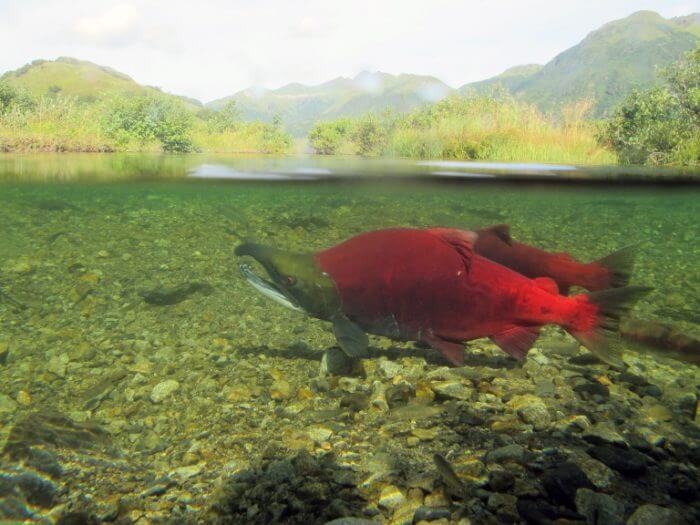When salmon spawn, the earth moves — not immediately, but over the course of hundreds of thousands or millions of years. That’s the conclusion of a study, co-authored by an Indiana University geologist, which finds that salmon can play a significant role in shaping mountain landscapes.
Brian Yanites, an assistant professor in the Department of Earth and Atmospheric Sciences in the IU Bloomington College of Arts and Sciences, and his co-authors model the effect of spawning salmon on riverbed erosion and calculate how it affects mountain landscapes.
Their paper, “Sex that moves mountains: The influence of spawning fish on river profiles over geologic timescales,” is being published by the journal Geomorphology.
The authors examine how spawning salmon stir up sediment in riverbeds and accelerate the erosion of river channels. They combine that information with mathematical formulations of sediment transport and erosion to show how the presence of salmon reshapes mountains and valleys.
“While the influence of salmon reproduction on sediment transport has been known, this is the first paper that has suggested the process could influence the height and shape of the landscape over long timescales and large spatial scales, such as the extent of a mountain range,” Yanites said.
One surprising finding was that salmon could influence erosion significantly. For example, the authors calculated that a landscape where salmon spawn could be up to 30 percent lower than a comparable landscape with no salmon present.
Salmon hatch in fresh water, live their lives in oceans, then return to rivers and streams to spawn. Female salmon turn on their sides and flap their tails to build nests, called redds, in which they lay eggs. Males then fertilize the eggs, which develop and hatch. In building the nests, the female salmon stir up sediment and help expose the riverbed, leading to more erosion nearby and downstream.
Some salmon are more potent mountain-movers than others, according to the study. Different species prefer to build their redds in different types of sediment, from the coarse grains found in the upper reaches of streams to the finer grains found downstream. Chinook salmon will spawn in a wider range of grain sizes than sockeye and pink salmon, the other two species studied; therefore, chinook salmon can disrupt longer reaches of rivers and streams and have a greater impact on erosion.
The study suggests salmon are at the center of a cycle of the building up and wearing down of mountains. Mountains are built by tectonic processes that lift rocks to higher elevations. In the Pacific Northwest, scientists believe, mountain-building created distinct environments that led to species “radiation” — the evolution of distinct salmon species from a common ancestor.
Those salmon species, through their spawning, contribute to erosion that wears down the very mountains that allowed the species to develop in the first place.
“More species means a wider range of grain size in which spawning can occur and therefore a greater impact on erosion,” Yanites said. “Thus we suggest that the radiation of salmon species in the Pacific Northwest may have lowered the elevation of mountains in the region.”
Alexander Fremier, an associate professor in the School of the Environment at Washington State University, is the lead author of the paper. Elowyn Yager, an associate professor of civil and environmental engineering at the University of Idaho, is a co-author.
If our reporting has informed or inspired you, please consider making a donation. Every contribution, no matter the size, empowers us to continue delivering accurate, engaging, and trustworthy science and medical news. Independent journalism requires time, effort, and resources—your support ensures we can keep uncovering the stories that matter most to you.
Join us in making knowledge accessible and impactful. Thank you for standing with us!

